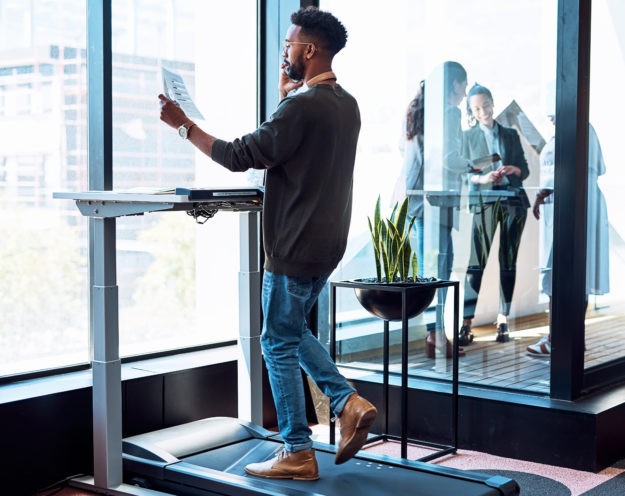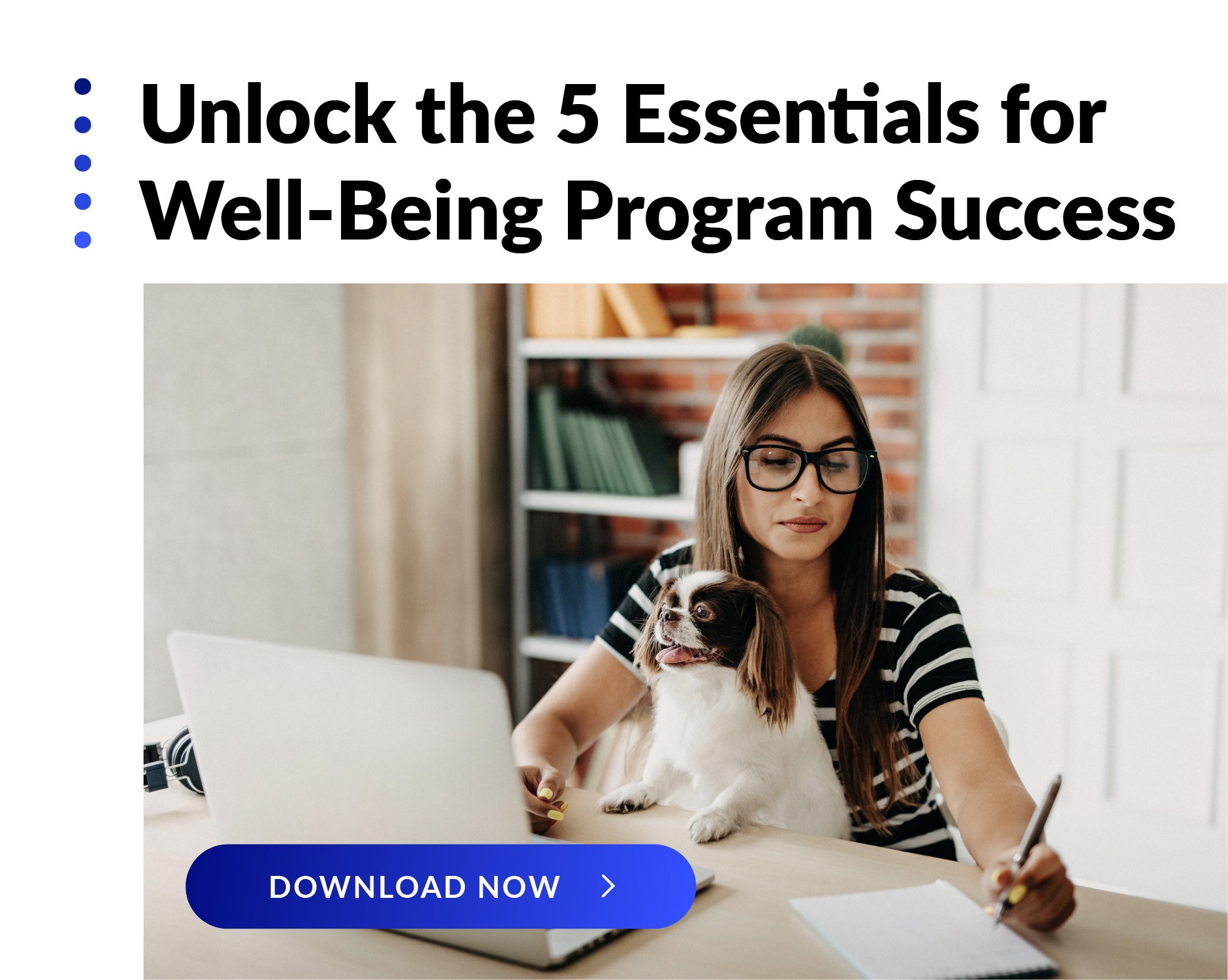 As 2021 comes to a close, we’re reflecting on just how much has changed in the world of well-being and benefits in the past two years. Over at our HR Scoop podcast, we’ve had some great conversations with HR experts from other organizations about how they’re managing the transformation. Check out these highlights to discover how well-being has changed over the last two years, regardless of which industry people work in.
As 2021 comes to a close, we’re reflecting on just how much has changed in the world of well-being and benefits in the past two years. Over at our HR Scoop podcast, we’ve had some great conversations with HR experts from other organizations about how they’re managing the transformation. Check out these highlights to discover how well-being has changed over the last two years, regardless of which industry people work in.
Where, when, and how we work—employees get to decide.
Flexibility is the name of the game for employers right now. The pandemic has shown we can be productive outside of the office, leading many previously remote-work averse companies to permanently adopt fully remote or hybrid work arrangements. Employees have become used to the flexibility of working from home and the extra hours added to the day without a commute. Not to mention the ability to better manage the “life” part of work-life balance.
As Rhonda Palos, Vice President of HR at the Oregon Humane Society, shared, “What we’re really realizing is that balance and flexibility has to do with each individual employee’s needs and their job…so it’s really about balance and flexibility for ‘me,’ not just for the company. It’s about me as an employee, and that’s how employees are thinking about it.” As the “Great Resignation” continues, we’re already seeing the price that some employers are paying for not keeping pace with flexibility.
There’s been a revolution in mental health.
Health experts had been sounding the alarm for a while about the prevalence of mental health concerns in the workforce, but it took a pandemic to bring it to the forefront. Now even CEOs are opening up about mental health and pushing for additional support for employees. Talk about a transformation!
Employers have begun to offer additional EAP counseling sessions, “mental health days,” and access to mental health apps. Rick Fortier, Senior Wellness Coordinator with L.L.Bean, told us how his company used existing platforms available to corporate employees to provide mindfulness, emotional wellness, and social support to all of their retail employees—something that wasn’t previously available.
All of these new supports are much-needed, but we’d be remiss if we didn’t say that the single most significant influence on an employee’s stress level at work has to do with cultural norms in the organization. If people see their leaders walking the talk, they’re more likely to feel “permission” to take care of their own mental health. It’s all part of the trend toward a more human-centered approach to work, and the recognition that people are humans first and employees second—a trend we hope is here to stay.
Employers are becoming intentional about social connections.
Social connections between coworkers happened naturally before, but when the pandemic hit, we had to be more intentional about creating them. Enter trivia nights, talent contests, photography contests, cooking demonstrations, and group yoga. Sure, some may have dreaded logging on to a screen after the workday, but we did walk away realizing that this was good for us, and that we needed it to stay connected to our teams.
Whether work remains remote or folks eventually get back to the office, we’ll continue to see more intentional ways to connect with coworkers over happy hours, volunteer activities, and maybe even a talent show here and there. Mitch Martens, Senior Wellness Manager at Northern Arizona Healthcare, summed it up perfectly: “We all know that social well-being is critical, but how many programs—how much stuff do we have that’s really devoted to social well-being? I really believe that it’s something we’re going to have to devote to more and more, because it’s become so obvious how much people are craving it.“
No more mincing words—parents need support from employers.
The pandemic effectively lifted the veil on parenthood. Working from home with schools and daycares closed, we could no longer hide the “parenting part” of our lives. This transparency helped many managers and leaders better appreciate the tenuous balance that parents maintain. Employers responded by increasing backup daycare benefits and establishing online learning “pods” at the office for employees’ children. They offered the flexibility to start the workday late, end it early, or simply take leave to get childcare sorted out.
And many took a closer look at leave policies for new parents. The U.S. is the only industrialized nation without a universal paid family leave policy, so it falls to employers to provide these benefits. Suzy Dunn, Chief of People at Zapproved, shared with us how her company has approached parental leave: “We decided we wanted to do what’s right for employees when we built out our leave programs, and not just what was required. So we offer 12 weeks paid leave, whether it’s the child-bearing, the non-child bearing, the foster, the adoptive—it’s really important to us that we do.”
The work of caregiving is finally “seen” and noted.
The number of Americans providing unpaid care to an adult with health needs has increased over the last five years; now, about 1 in 5 people are caregivers. Similar to parents grappling with childcare, the pandemic put formerly “unseen” caregiving duties on full display. Pam Rich from the Business Group on Health shared that since the pandemic started, “employers have been thinking really strategically, really thoughtfully about how they can support all of the employees within their workforce who are caring for a loved one.” She says, “We’ve seen our employer members implement things like caregiver leave, backup childcare, they’ve updated their PTO policies to make those more flexible…and then implementing supports for caregivers as well, knowing that caregivers are experiencing really difficult mental health issues.”
Financial stress is real, with a tangible impact to the bottom line.
According to a survey by Bankrate, just 39 percent of Americans say they could comfortably cover an unexpected expense of $1,000. That’s what led L.L.Bean to implement “pandemic pay.” Rick Fortier told us that they realized that “what you might consider physical health needs might not have been the most important support we needed to provide, so one of the first things L.L.Bean did was provide pandemic pay. We provided a way for them—while things were shut down or slowed down—to still have the financial support that they needed to live life and be able to take care of themselves. That came first and foremost. It was not only the most important thing to do, but also the most caring thing to do.”
Employers know that financial worries follow employees into the workplace. In fact, it’s estimated that financially stressed employees spend nearly three hours or more handling financial matters during the workday—a huge drain on productivity. So many more employers are now offering financial wellness benefits geared toward budgeting, saving for a major purchase, and understanding basic concepts like interest rates, getting out of debt, and planning for the future.
There are probably some skeptics reading this post thinking, do employers really need to be involved in all these parts of employees’ lives? Hint: yes! Isn’t it enough to provide a paycheck? Hint: No—the tide has turned. For employees to show up for work every day and be engaged and productive, they need support in other non-work aspects of their lives. It all makes for a more human workplace, which will be a crucial differentiator for employers going forward.
Want more insights? Be sure to check out our other episodes of the HR Scoop podcast, where leading HR professionals share their thoughts on the world of benefits and well-being with us.




